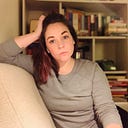Member-only story
Poor People Don’t Have the Privilege of ‘Tidying Up’
On the disturbing differences between ‘Hoarders’ and Marie Kondo’s foray into reality TV
When Hoarders premiered in 2009, it joined a slate of reality TV shows — like Intervention and My Strange Addiction — which sought to peer into the abyss of human existence. Depending on your perspective, these shows either held up a mirror to our collective consumerist reality, or shined a light on people who, mercifully, reassured us that we could be so much worse.
A New York Times Magazine columnist at the time focused on how Hoarders fit neatly into a larger consumerist structure: “In a sense, the show can be read as a metaphor for an entire culture that has lost perspective on the relative importance of things and desperately needs help.”
“Then again,” he added, “it could be read as perversely reassuring, inserting distance between the rest of us and a handful of out-of-control freaks.”
Conversely, Tidying Up With Marie Kondo, which premiered on Netflix this month and immediately became must-watch resolution fuel, does not encourage gawking. As Kondo, the best-selling author behind every clothing swap you attended in 2016, bounds around middle-class homes, viewers are meant to see themselves in the clutter.
